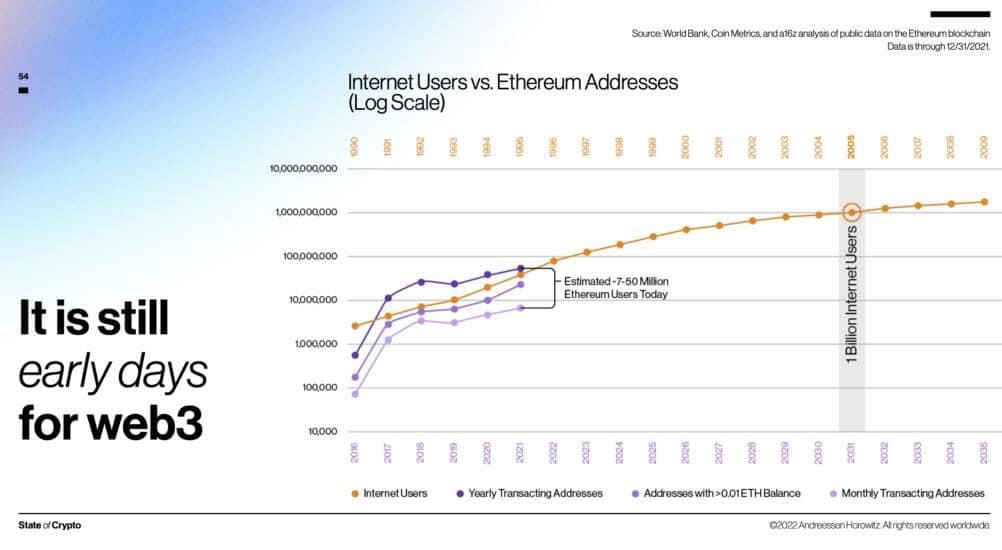The new report by venture capital fund Andreessen Horowitz shows all the upcoming trends in the crypto world.
Summary
Upcoming crypto trends according to the a16z venture capital report
The new report by the venture capital fund Andreessen Horowitz, also known as a16z, was published on 17 May. The report outlined the current situation in the cryptocurrency world and what the next trends in the sector might be.
Introducing a16z’s 2022 State of Crypto Report
A lot has changed since we started investing in crypto nearly a decade ago.
Here are 5 key takeaways from the a16z crypto web3 industry survey and data analysis by @darenmatsuoka, @eddylazzarin, @cdixon & @rhhackett ⬇️ pic.twitter.com/JFLXbNh03u
— a16z (@a16z) May 17, 2022
According to the experts who compiled the report, this would be the fourth cycle for cryptocurrencies, which are characterized by periods of euphoria and periods of negative market conditions, referred to as “crypto winters”.
The report states that:
“These cycles appear chaotic but have an underlying order, roughly characterized as:
- the price of Bitcoin and other crypto assets goes up,
- leading to new interest and social media activity,
- leading to more people getting involved, contributing new ideas and code,
- leading to projects and startups getting created,
-
leading to product launches that inspire more people, eventually culminating in the next cycle”.
The first cycle is considered to be from 2009 to 2012, the second from 2012 to 2016, the third from 2017 to 2019 and the current one from 2020 to the present. This period, which was punctuated by a period of great euphoria culminating in last November’s record highs, is now going through a period of widespread declines.
Web3: the new frontier of the crypto world

According to the report, Web3 will be the driver of the recovery and is to be regarded as the biggest innovation in recent years.
Founders who swore off tech and the internet in the aftermath of the dotcom crash missed the best opportunities of the decade: cloud computing, social networks, online video streaming, smartphones…
Now is the time to consider what the equivalent successes will be in web3. pic.twitter.com/AsyUnXmrdE
— a16z (@a16z) May 17, 2022
According to venture capital research, Web 3.0 was by far the most profitable method for developers than any other similar tool on the web.
In 2021 Spotify and YouTube paid creators $7B and $15B respectively – but the “per capita” disparity compared to web3 is striking:
According to our analysis, web3 paid out $174,000 per creator. Meta paid out $0.10/user, Spotify $636 per artist, and YouTube $2.47 per channel. pic.twitter.com/p2ipeD8Rft
— a16z (@a16z) May 17, 2022
According to Andreessen Horowitz’s analysis, Web3 paid $174,000 per creator. Meta (Facebook) paid $0.10 per user, Spotify $636 per artist and YouTube $2.47 per channel.
Considering the current potential and numbers, Web3 is only at the beginning of its expansion. The report points out that the number of users is comparable to that of the Internet in 1995. As a projection, analysts suggest that Web 3.0 may have a development quite similar to the impact that the Internet has had.
Another absolutely interesting aspect is the exponential growth that DeFi has had, which in just two years has come to capitalize over 100 billion dollars from zero. Considering that around 1.7 billion people in the world do not have a bank account, the number of users of decentralized finance is set to grow further in the coming months.

